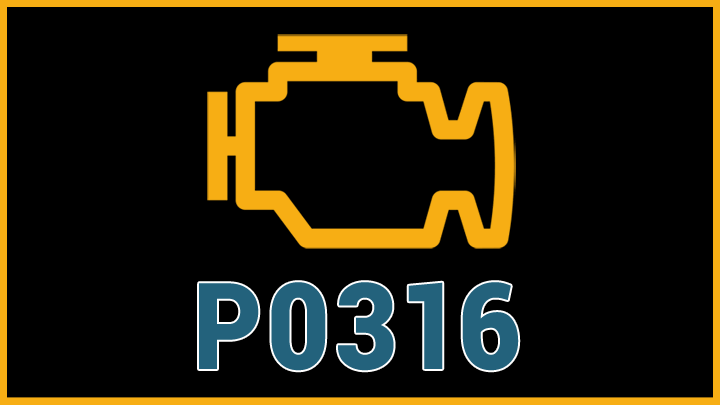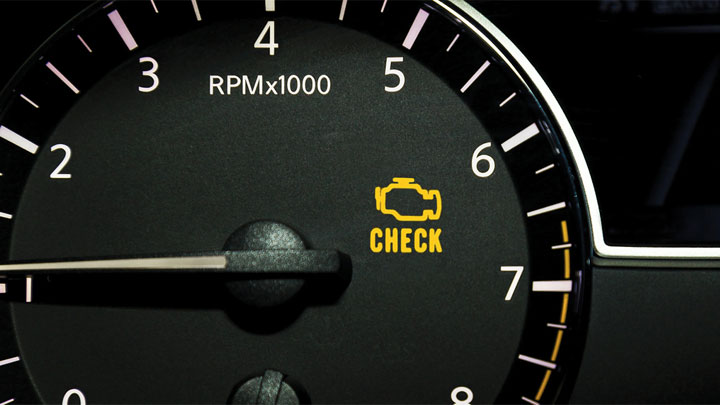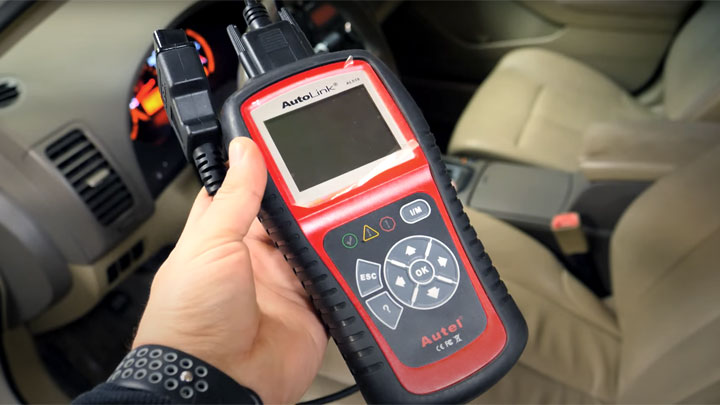P0316 Code (Symptoms, Causes, and How to Fix)
Engine misfires can cause hesitation and performance issues. Fortunately, modern vehicles log misfire details, like cylinder and timing. Code P0316 indicates a misfire on startup, within the first seconds of ignition.
Learn the causes of startup misfires triggering diagnostic code P0316, how to fix it, and whether you can continue driving in the meantime.

What Does Code P0316 Mean?
Diagnostic fault code P0316 is indicative of an existing misfire condition, which has been registered by a vehicle’s PCM within the first minute of start-up. The term “misfire” is used to describe an individual combustion cycle that has failed within a given cylinder. This is felt by a motorist as a vibration, shimmy, or hesitation.
As stated, code P0316 deals specifically with misfires that take place immediately following engine start-up. However, this code might also be accompanied by additional codes (see below), which correspond to a given cylinder. The presence of a secondary cylinder-specific code would be indicative of a more consistent misfire, which also tends to be easier to isolate.
See Also: P0300, P0301, P0302, P0303, P0304, P0305, P0306, P0307, P0308
Symptoms of Code P0316

Diagnostic fault code P0316 is often accompanied by a host of symptoms, some of which tend to be quite noticeable in nature. Recognizing these symptoms can be of significant value when attempting to formulate a viable diagnostic strategy.
The following are several of the most common symptoms associated with DTC P0316.
- Illuminated check engine light
- Noticeably erratic idle
- Hesitation at start-up
- Reduced engine performance
Causes of Code P0316

Diagnostic fault code P0316 can be caused by several different underlying issues, each of which warrants a thorough diagnosis. Understanding the potential causes of this fault code can prove valuable when attempting to remedy the issue at hand, in the most expedited fashion possible.
The following are several of the most common causes of DTC P0316.
- Ignition system issues
- Fuel system problems
- Internal engine defects
- Poor fuel quality
- Failed crankshaft position sensor
- Compromised crankshaft position sensor wiring
- Faulty PCM
- Vacuum leaks
- Exhaust system restrictions
Is Code P0316 Serious?
Diagnostic fault code P0316 is generally considered to be quite serious in nature, primarily due to the fact that this particular fault often foreshadows mechanical and/or electrical issues that will only grow more severe over time.
Additionally, misfire-related faults, such as DTC P0316 are often accompanied by a host of symptoms, many of which tend to negatively impact a vehicle’s driveability.
It is also worth considering that under certain circumstances, an unrepaired misfire can lead to further mechanical hardship. For example, when left untreated, ignition system failures resulting in a misfire can lead to excess downstream fuel dosing. This, in turn, can do significant damage to a vehicle’s catalytic converter, eventually necessitating replacement.
In any event, it is important to diagnose and repair the root cause of a vehicle’s P0316 fault code as soon as possible. Doing so can save unnecessary hassle and expenditure in the future.
Unless you feel confident in your ability to perform these repairs yourself, it’s recommended to make an appointment with a local service center at your earliest convenience.
How to Fix Code P0316

The following steps can be followed to assist in diagnosing and repairing fault code P0316. As always, factory-specific service literature for your particular vehicle should be consulted before attempting any such repairs.
#1 – Check For Additional DTCs
Before beginning the diagnostic process, check for the presence of any additional fault codes using a good car diagnostic tool. Any such fault codes should be thoroughly diagnosed and repaired before proceeding.
#2 – Inspect Crankshaft Position Sensor
Begin by inspecting your engine’s crankshaft position sensor for obvious signs of damage. Likewise, check all associated wiring for any irregularities. An engine’s camshaft position sensor can also be checked in a similar fashion.
#3 – Check Fuel Pressure
Next, check your engine’s fuel pressure at an appropriate test port, with the use of a quality pressure gauge. Compare readings to those specified by your vehicle’s manufacturer.
#4 – Analyze Freeze Frame Data
If your engine’s fuel pressure has proved satisfactory, it can be helpful to review all pertinent freeze frame data before proceeding. Lean fuel trims would be indicative of a fuel injector-related issue, or the presence of a substantial vacuum leak. In absence of a lean condition, the engine’s ignition system would prove suspect.
#5 – Test Injector Function
If a lean condition persists, each injector should be force cycled to test functionality with a bi-directional scan tool.
#6 – Check For Vacuum Leaks
In the event of a lean condition, an engine should also be checked for the presence of vacuum leaks. The exact location of these leaks can be identified with the use of a diagnostic smoke machine.
#7 – Verify Ignition System Function
In absence of a lean condition, an inline spark tester can be used at each individual cylinder to check for proper ignition system function.
#8 – Check Compression
If no issue has been located to this point, a compression test is likely in order. This should reveal the presence of internal engine damage, if any exists.
#9 – Reflash PCM
If all else appears to be in working order, your vehicle’s PCM might have to be reflashed or reprogrammed. This will likely require a visit to the dealer.
- P0480 Code (Symptoms, Causes, and How to Fix) - Apr 19, 2024
- Car Temperature Gauge Stopped Working? (Here’s Why) - Apr 15, 2024
- Ignition Coil vs Coil Pack (What’s the Difference?) - Apr 8, 2024
